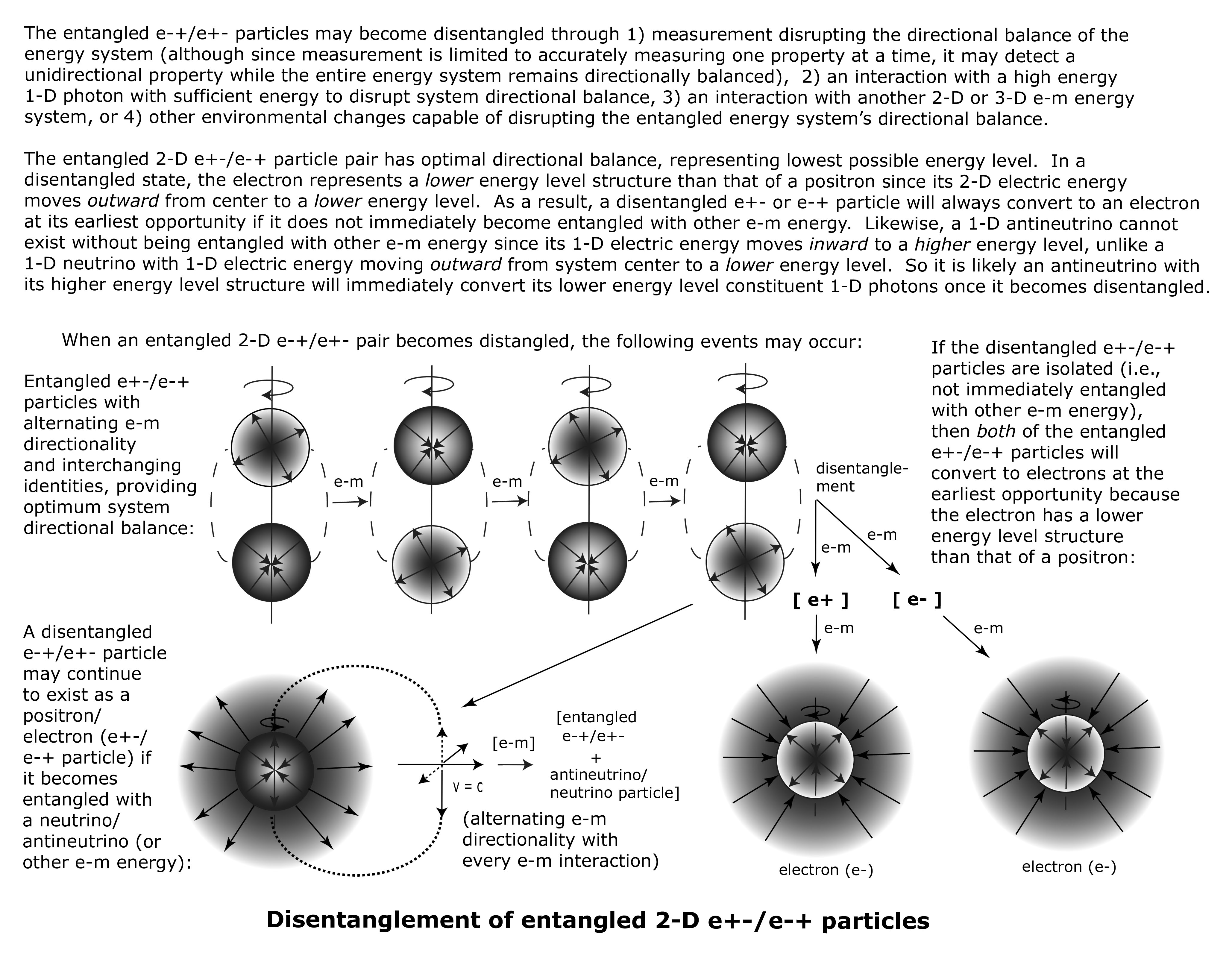 Entangled 2-D e-+/e+- particles may become disentangled through ….
Entangled 2-D e-+/e+- particles may become disentangled through ….
1) measurement (may cause disentanglement if the measurement interacts with, or changes, the properties of the entangled energy being measured),
2) an interaction with a 1-D photon with sufficient energy to change an entangled particle’s rate of e-m interaction (energy level),
3) an interaction with another 2-D or 3-D e-m energy system, or
4) other environmental changes, resulting in added energy to the entangled energy system.
Entangled energy consists of optimal directional balance, allowing the entangled energy to exist at its lowest possible energy level. So it takes additional energy, or some sort of interaction with external energy, for the entangled energy to become disentangled.
In a disentangled state, the electron represents a lower energy level structure than a positron, and a disentangled e+- or e-+ particle will always convert to an electron (at its earliest opportunity) if it does not immediately become entangled with another e-m energy system. However, a positron may exist without an entangled electron partner if it is entangled with another e-m energy system, most commonly, a 1-D neutrino.
A disentangled 1-D neutrino may break down into its lower energy level constituent 1-D photons. But a 1-D antineutrino has an even higher energy level structure than a 1-D neutrino since the 1-D electric energy of an antineutrino moves inward toward a higher energy level. So, once a 1-D antineutrino becomes disentangled from a 1-D neutrino or from a 2-D electron, it will spontaneously convert to its lower energy level constituent 1-D photons.
When an entangled pair becomes disentangled, the individual particles will exist with unidirectional, opposing e-m directionality. However, with the next electromagnetic interaction, an anti-neutrino will convert to its constituent photons (with a lower energy level structure) and a positron will convert to an electron (with a lower energy level structure). Most observable elementary unidirectional energy consists of 1-D photons and 2-D electrons as a result. However, antineutrino/neutrinos and electron/positron pairs may exist within larger e-m energy systems as constituent particles. Protons, for example, are composed of two entangled 2-D e+-/e-+ particles, and one lone unentangled (or weakly entangled) positron (i.e., quarks).
